Is it my imagination or are we seeing more ‘weeds’ in gardens now?
I don’t mean gardens that look unkempt. Some of the prettiest gardens now unashamedly seem to have weeds sprouting alongside the bedding.
I used to work on glossy magazines. If we encountered something new or unexpected twice in a few days, we always called it a ‘new trend.’
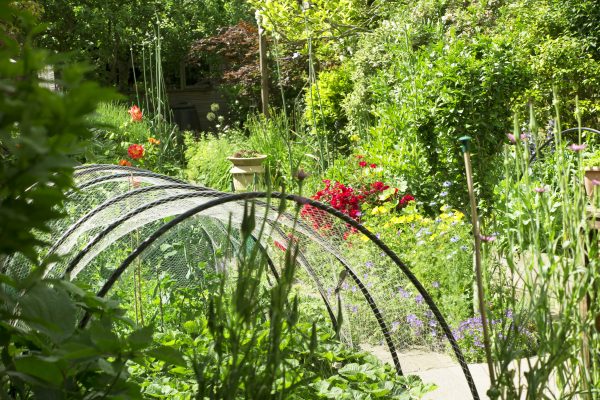
Mary and John Cousins’ is Garden 8 in the Faversham Open Gardens & Garden Market Day on June 25th. You can see the wild salsify front centre and on the right of the photo in clumps in the vegetable patch.
I’ve been photographing gardens to publicise Faversham Open Gardens & Garden Market Day on 25th June. I found weeds were welcome in several gardens, even by quite serious and knowledgeable gardeners.
Weeds in borders
So are we seeing a trend towards weeds in borders? Feel free to tell me that all the best gardeners have always left their favourite weeds in situ.
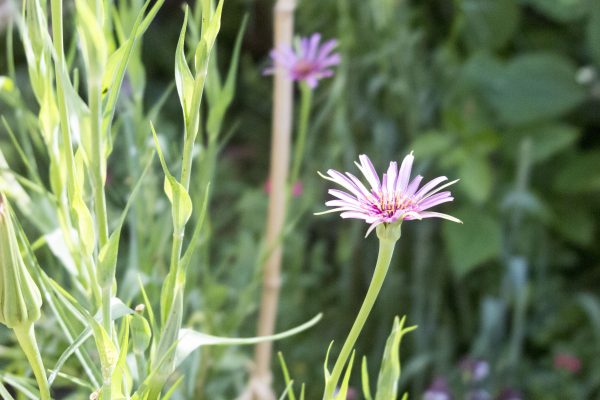
Tragopogon porrifolius or wild salsify grows on the marshes near Faversham. Kind birds drop the seeds in our gardens – seen above in elegant clumps in Mary and John Cousins’ garden. It’s too beautiful to wrench out.
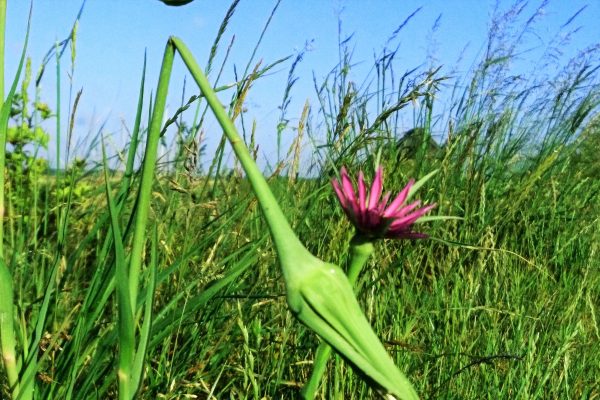
Oare Marshes. In late May there are banks of pink salsify turning their heads to the morning sun.
Purple loosestrife
It always gave me a pang to pull out the tall purple spires of loosestrife scattered through my garden.
But when I visited Jack and Carolyn Wahlberg’s garden (Garden 36 in Faversham Open Gardens & Garden Market Day), I was impressed that Carolyn just lets the purple loosestrife roam around the garden.
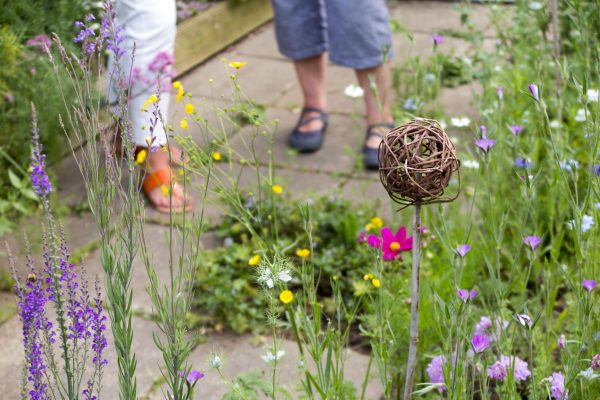
Purple loosestrife in Jack and Carolyn Wahlberg’s garden.
I went home and photographed mine. It can stay for a little longer, although googling it for this post has yielded the word ‘invasive’ a bit too often.
Several Governments around the world are waging war on purple loosestrife. It can choke marshlands and drive out native species.
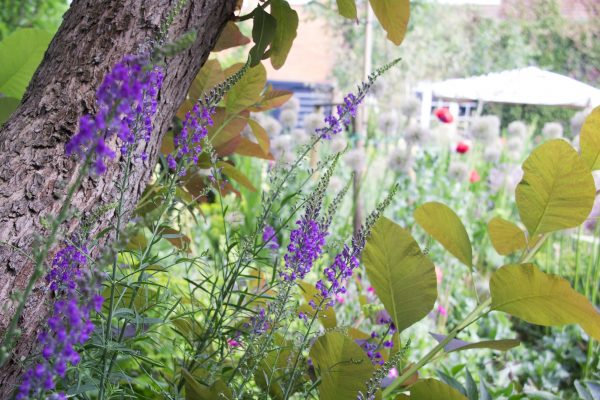
It grows under a tree in heavy shade in my garden – and I do think it is rather beautiful. The Canadian and Australian Governments describe it as ‘very invasive.’
Centranthus ruber or red valerian
I wasn’t sure if the clump of valerian that sprouted beside my dahlias was a weed or not.
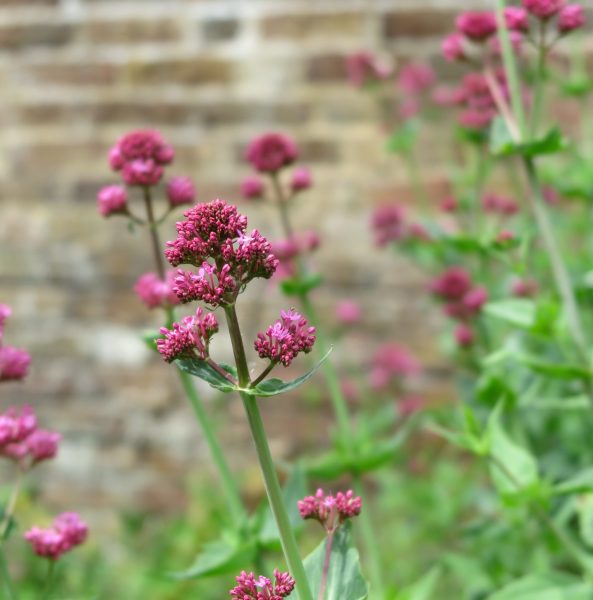
Very pretty, but over a number of years, the garden was neglected. The valerian took root in the brickwork and the bricks are all now being replaced.
It’s listed as a ‘bee-friendly’ plant by the RHS, but gardening friends tell me it is also a weed. It grows out of walls, and in coastal sites, so it’s extremely useful. I first fell in love with it when writing a post about Tom Croft’s garden. However, it has eaten into the brickwork…
Perhaps it’s a good idea to be very firm with weed-flowers in your beds.
Wild mallow or malva neglecta
This has a strong architectural shape and sweet little pink flowers. It’s trying to elbow an echinops out of my border. But I think it’s pretty, so I’ll see who wins.
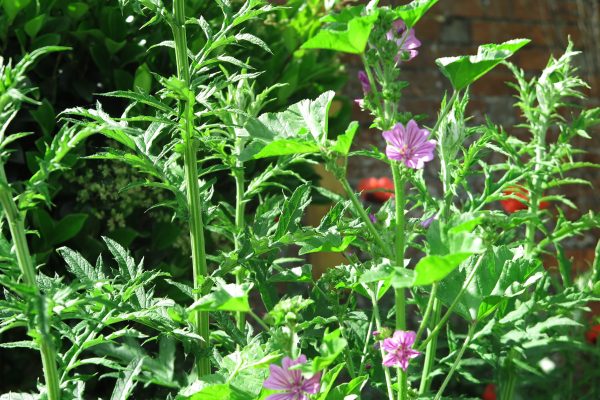
Malva neglecta or wild mallow
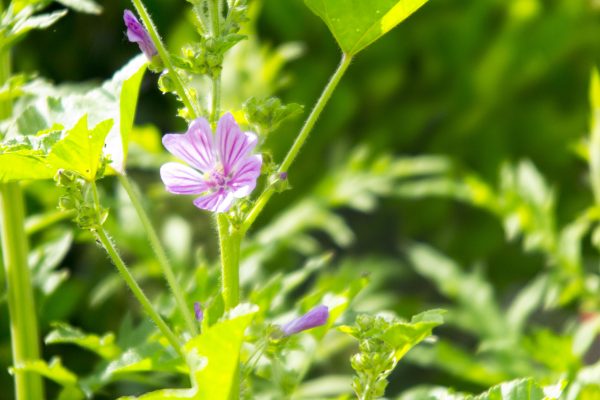
And close-up.
Borage
Is borage a weed? I definitely didn’t plant it. It’s being quite thuggish, so it will have to go.
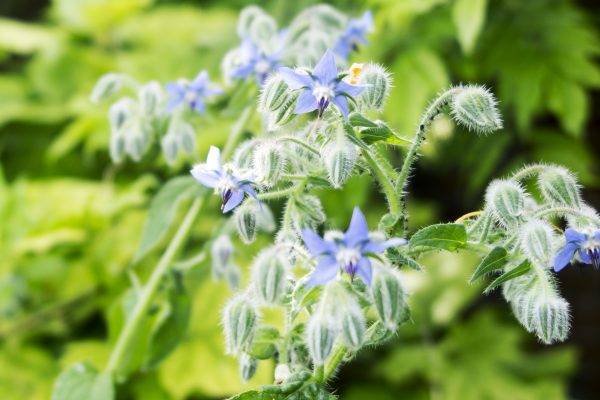
Borage. Supplied by a kind bird. But I think it’s a weed.
Oddly enough, another thing these ‘weeds’ have in common is that they are edible (not loosestrife).
You can forage for wild salsify, eat borage flowers in Pimms and valerian is used to help anxiety and sleeplessness. All parts of wild mallow are edible and it is considered a ‘superfood’ nutritionally (although apparently it has a boring taste.)
I’m a nervous forager. I would only want to you try eating weeds if you had checked with at least three other independent sources that they were safe. Because there are always side effects to worry about!
They say that a weed is only a flower out of place. In some parts of Australia, agapanthus is classified as an invasive weed.
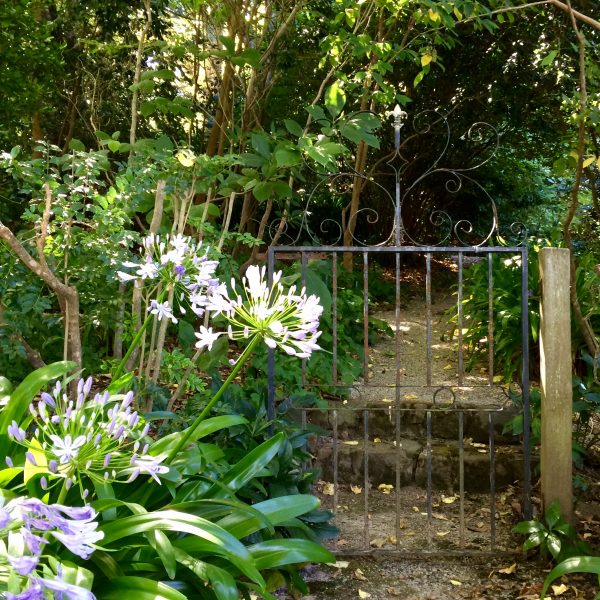
Agapanthus is considered an invasive weed in some parts of Australia.
So what weeds have you got growing in your garden? Do you think we are getting more relaxed about weeds – and is that a good thing?
Pin this for later:
The post Are we seeing a new direction in weeds? appeared first on The Middle-Sized Garden.
from The Middle-Sized Garden http://www.themiddlesizedgarden.co.uk/are-we-seeing-a-new-direction-in-weeds/
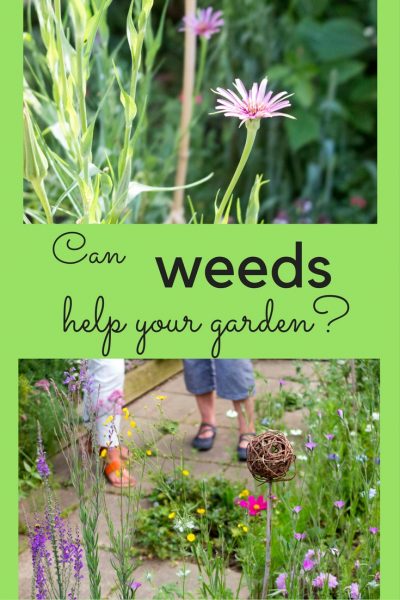
No comments:
Post a Comment